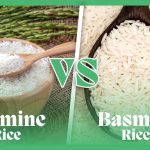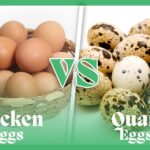It’s a crisp mid-autumn morning and you are out for weekly grocery shopping, you see aisles of colorful vegetables lined up neatly in the produce section of the hustling grocery store, and your eyes fall on the sweet potatoes stacked next to a bundle of yams; you fail to decipher the difference between the two. You have always been confused about the two vegetables and remember that you have eaten sweet potatoes in the name of yams countless times. You stand there staring down at the vegetable bundle wondering whether they are the same thing or one has better nutritional composition than the other/ is healthier.
Well, let us clear the numerous queries you have on your mind. Join us as we explore these closely related yet wonderfully distinct tuberous root vegetables and uncover fascinating insights about them.
Sweet potatoes and yams are NOT the same. Despite both being root vegetables and often used interchangeably, they belong to different plant families and maybe are distant cousins. Their origin, appearance, taste, texture, nutritional composition, potential health benefits, and cooking methods are different.
So let us dig in for more information and get to the root of it!
What are Sweet Potatoes?
Sweet potatoes, a Thanksgiving tradition scientifically known as Ipomoea Batas are starchy, naturally sweet root tubers native to Central and South America. In the United States, they are mainly produced in North Carolina, while China, Nigeria, and Tanzania are the major worldwide producers.
They are available in orange, reddish brown, reddish-purple, and white color, while the most common type of sweet potato is bright orange with reddish-brown skin. Warm, temperate climates and tropical regions are the most favorable conditions for sweet potatoes to grow. Unlike regular potatoes, they are elongated and slender in shape with pointy ends and thin skin.
Types of sweet potatoes:
Sweet potatoes are mainly of two types:
Orange flesh sweet potatoes:
More common in the U.S., these types of sweet potatoes have orange flesh with copper-brown skin. Their flesh is not only soft and fluffy but sweeter.

White flesh sweet potatoes:
These potatoes possess white or light yellow flesh and golden skin. They have a firm, dry texture and are less sweet than orange-fleshed ones.

What are Yams?
Yams, biologically known as Dioscorea batatas. They are edible stem tubers with cylindrical shapes and tough grey-brown skin, mainly produced and a staple in tropical regions of Asia and Africa. They can be stored in humid environments due to their high starch content.
Yams are less sweet and drier than sweet potatoes with an earthy neutral taste and are toxic when raw. Among 600 varieties of yams, some prominent ones are Chinese yams, yellow yams, and ube, mostly available with white, purple, and reddish fleshes.

Why the perplexity?
If you’ve ever wondered why sweet potatoes and yams often get mixed up, you can blame it all on history – the ultimate culprit for this veggie identity crisis!
In the early 20th century, Julian C. Miller cultivated a new sweet potato variety with soft orange flesh that was entirely different from the already existing firm ones. So, it was given the name “Yams” to differentiate it from other varieties. ‘Yams’ is an African word derived from nyam, nyami, or enyame, don’t fret, and let your tongue twist over the words it just simply means “to eat”.
Enslaved Africans in America were the first to call it yams because it reminded them of the ones back home. Today, the US Department of Agriculture requires the word yam to be accompanied by sweet potatoes.
Nutrient composition of sweet potatoes and Yams:
Sweet potatoes and yams not only differ in origin, appearance, and textures but also in their nutrient composition. Read carefully for the side-by-side comparison of the macro- and micronutrient contents of the two root vegetables.
Macronutrient composition:
The macronutrient composition of the popular Thanksgiving side dish, sweet potato, is as sweet as its name. They are nutrient-dense and energy-dense vegetables incorporating 90 calories in 100g, providing 20.1g of carbohydrates. The carbohydrate content of sweet potatoes mainly comes from starches (53%) followed by simple sugars (32%).
Starches are complex carbohydrates and an essential source of energy. Sweet potatoes have a fairly high fiber content (3g), providing 16% of the recommended daily intake. 77-85% of the total fiber comes from insoluble fiber (lignin, cellulose, and hemicelluloses), while 15-23% from soluble fiber (pectin)
Roots and tubers are usually low in protein, which is similar in the case of sweet potatoes. They are relatively low in protein and contain only 2g in 100g with trace amounts of fats and no cholesterol.
The cylindrical-shaped yams with bark-like skin contain more calories per 100g (116g) than sweet potatoes. About 3g of fiber is present in yams out of 27.5g of carbohydrates. High fiber helps provide bulk to the food, prevents constipation, and lowers cholesterol levels. Yams are lower in protein content (1.5g) than sweet potatoes and are fat-free.
Micronutrient composition:
Sweet potatoes and yams are rich in both fat-soluble and water-soluble vitamins. Beta-carotene; a precursor of Vitamin A is in abundant amounts in sweet potatoes consumption of 100g a day fulfills the recommended daily intake of Vitamin A. They are also loaded with Vitamin C, sodium, potassium, manganese, calcium, and B-complex vitamins that aid in major body functions.
Having looked at the micronutrient profile of sweet potatoes, they trump yams in terms of vitamin A; however, yams have more vitamin C content than sweet potatoes. Yams are also good sources of potassium, phosphorus, manganese, copper, zinc, and Vitamin B2.
Bioactive compounds in sweet potatoes and Yams:
Sweet potatoes and yams stock up crucial bioactive compounds with physiological effects beyond their nutritional properties. Polyphenols, phenolic acids, flavonoids, and anthocyanins are abundantly present in sweet potatoes. Phenolic acids and flavonoids are present in all types of sweet potatoes, while anthocyanins are only found in purple sweet potatoes.
The leaves of sweet potatoes have higher levels of polyphenols than those of spinach, kale, cabbage, eggplant, and lettuce (1).
Some of the diseases-preventing bioactive compounds present in yams are polysaccharides, steroidal saponins, polyphenols, and allantoins (2). The beneficial effects of these compounds are discussed ahead.
Role in human nutrition:
Sweet potatoes:
Given the amount of essential macro and micronutrients in both vegetables, their health benefits on the body are immense. Following are some of the major health benefits of sweet potatoes.
Gut health:
Sweet potatoes contain both types of fiber- soluble and insoluble fiber. Soluble fiber undergoes fermentation in the gut and the end product has major health benefits that include a healthy gut, a better immune system, softening of the stool, and reducing the risk of major chronic diseases.
Insoluble fiber found in purple sweet potatoes helps relieve constipation by absorbing water and providing bulk to the stool. Phytosterol, a bioactive compound found in sweet potatoes protects against gastric and duodenal ulcers.
Cancer prevention:
Sweet potatoes are packed with phytochemicals that act as antioxidants and fight against cancers by inhibiting cancer cell growth. Anthocyanins, mainly present in flowers, fruits, and tubers are purple pigments that reduce the risk of bladder, colon, stomach, and breast cancers. Another antioxidant, Carotenoids, responsible for the orange color of the potatoes, lowers the risk of prostate cancer.
Healthy vision:
Beta carotene- a precursor to Vitamin A helps prevent dry eyes and night blindness. The body converts beta-carotene into Vitamin A and produces light-detecting receptors in the eyes. Beta-carotene reduces the risk of age-related cataracts, macular degeneration, and glaucoma with the help of Vitamin C, E, and Zinc. A medium sweet potato a day can fulfill the daily requirement of a person’s Vitamin A intake.
Brain function:
Sweet potatoes are an incredibly rich source of Anthocyanins and Carotenoids. Anthocyanins found in purple sweet potatoes improve brain function, memory, and learning by reducing free radicals. Free radicals are highly unstable molecules, their excess causes cellular damage leading to oxidative stress. Beta carotene, a pre-vitamin A helps prevent cognitive decline.
Immune system:
Vitamin A and C abundantly found in sweet potatoes are two of the most crucial nutrients for the immune system. Vitamin A is responsible for keeping the gut healthy which in turn protects the immune system. Sweet potatoes provide 25% of the Vitamin C daily requirement to the body, hence fighting against infection and improving immunity. Both A and C vitamins help produce T cells, a type of White blood cells that boosts the immune system.
Heart disease:
The high fiber antioxidant and low-fat content of sweet potatoes make them a great food for protecting against cardiovascular diseases by lowering LDL cholesterol.
Weight loss:
Obesity is becoming a major worldwide problem giving rise to chronic diseases. Sweet potatoes are a nutrient-dense vegetable; their complex carbohydrate, fiber, and water content assists in weight loss. About 11% of resistant starch which acts as soluble fiber resides in sweet potatoes, and moves through the stomach undigested, thereby taking part in weight loss. The roots of yams have a fiber named glucomannan that also aids in weight loss.
Skin and hair:
Vitamin C produces collagen- an essential protein in skin and hair. Intake of sweet potatoes helps produce this collagen as they are abundant in Vitamin C. Vitamin A and E found in sweet potatoes may also help in avoiding acne breakouts. Orange and purple sweet potatoes have also been studied to relieve symptoms of psoriasis- an autoimmune disease.
Blood pressure:
The high potassium content of sweet potatoes helps in reducing blood pressure.
Yams:
Yams are yet to be studied extensively in terms of their health benefits in humans. However, some of the proven health benefits of Yams are as follows:
Regulate hormones:
Yams aid in hormone balance and prevent post-menopause-related diseases. There’s a decline in oesterogen levels in menopause which causes hormonal imbalance leading to osteoporosis.
Cancer prevention:
The high content of antioxidants such as phenol and flavonoids in Yams may help in reducing cell overgrowth. The presence of ample amounts of phenols, flavonoids, and vitamin C protects against the tumors of the colon and liver.
Blood glucose:
Purple yams in particular have been studied to reduce blood glucose levels and weight. Resistant starch, a type of soluble fiber abundantly present in yams decreases fasting blood glucose as well as HBA1C levels, biomarkers for diabetes mellitus.
Brain function:
Yams have a high role in improving brain function and preventing Alzheimer’s. Diosgenin, a steroidal sapogenin found in Yams improves memory and learning ability by promoting neuron function.
High blood pressure:
Water yams are considered to be excellent sources of zinc and potassium and, hence are beneficial for hypertensive patients.
Anti-inflammatory:
Anti-inflammatory agents and antioxidants found in yams reduce chronic inflammatory conditions such as heart diseases, irritable bowel syndrome as well and stomach issues.
Cooking methods of sweet potatoes and yams:
Let’s shed some light on the preparation methods of sweet potatoes and yams. Being a staple Thanksgiving dish and native to the US, they are prepared in a variety of ways.
- Sweet potatoes are mostly served as roasted, baked, or mashed.
- They are also used as fries as an alternative to regular potato fries.
- Sweet potatoes are also used in soups, desserts, and pies.
- The nutritional value of dark leaves of sweet potatoes is compared with dark leafy vegetables and is cooked alongside other ingredients.
- The leaves may also be dried and stored for later use.
- The orange-fleshed sweet potatoes are most commonly used in Thanksgiving dishes such as candied sweet potatoes or sweet potato casseroles.
There are numerous ways to cook yams. Some of them are:
- Yams are not only available in their whole form but also in their powder and flour form, thereby increasing their uses.
- The yam flour is used to make dough to serve as a side dish with stews.
- They are usually served in boiled and roasted form.
To wrap it all up, sweet potatoes and yams are entirely different vegetables. The only physical similarity between them is they are both root vegetables from a flowering plant. However, in terms of nutrition and being extensively studied, sweet potatoes have a slight upper hand.
That does not mean yams are any less beneficial than sweet potatoes, as both vegetables are excellent sources of essential nutrients and fibers, and need to be a part of everybody’s healthy diet.









